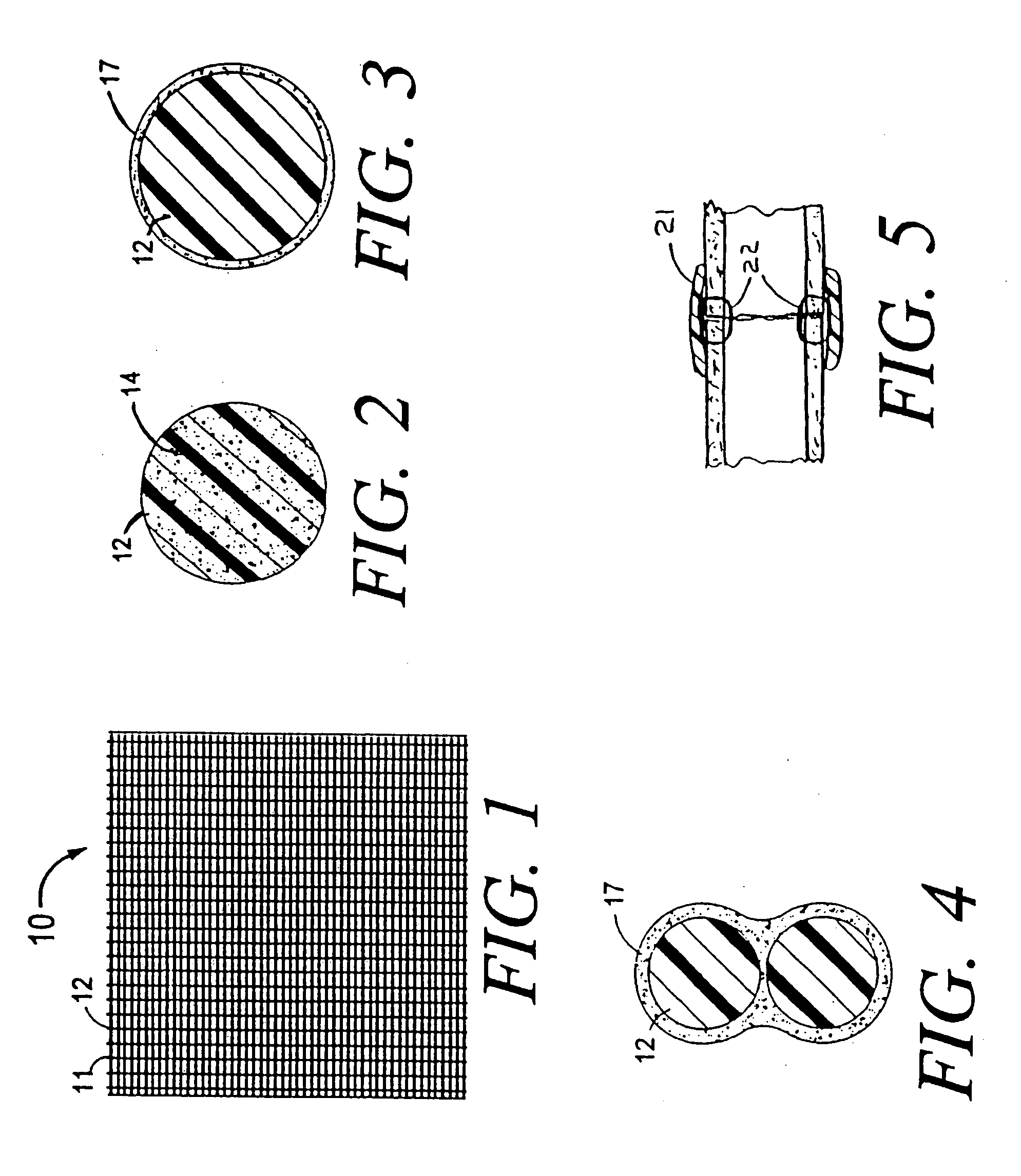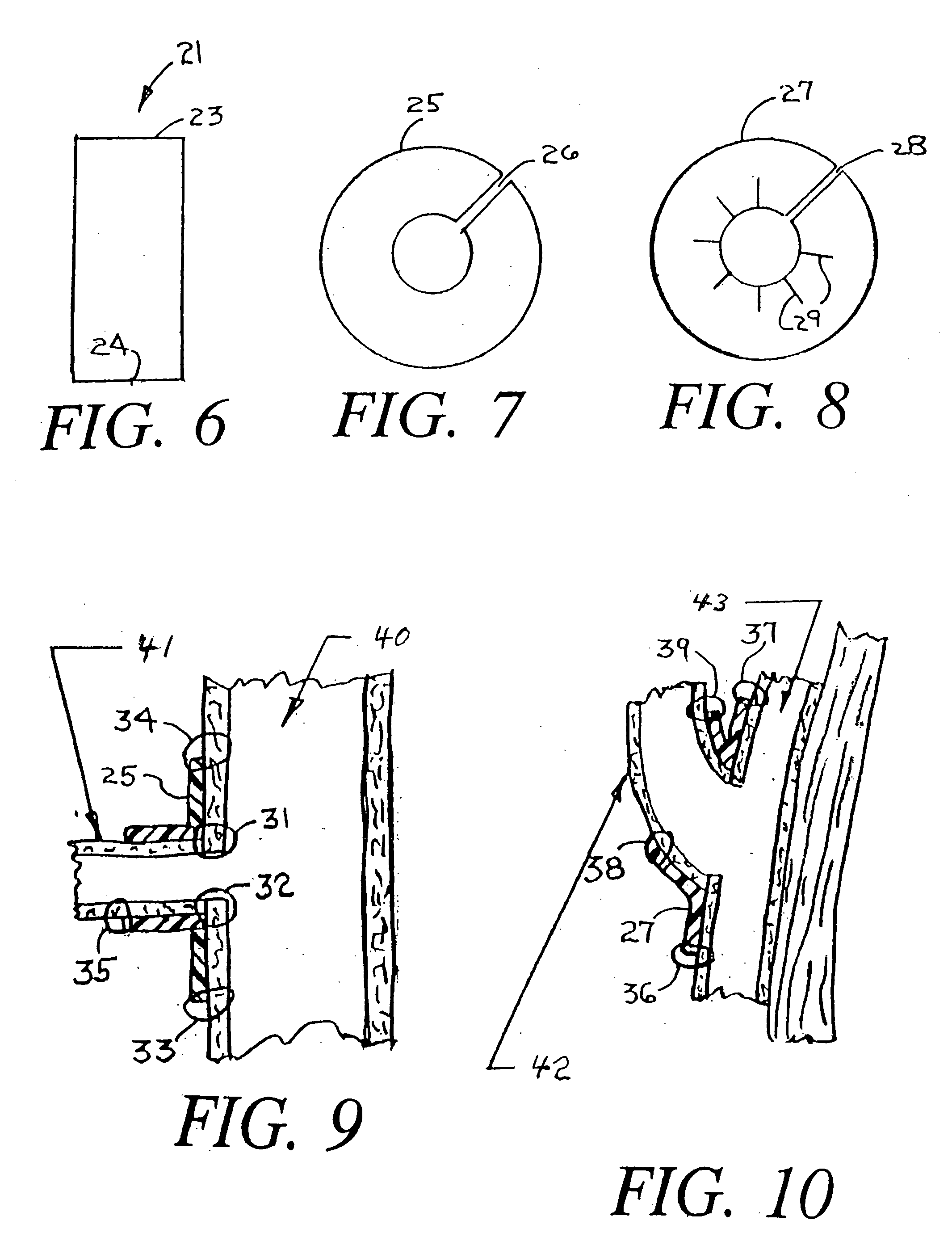Combination drug therapy for reducing scar tissue formation
a technology of scar tissue and drug therapy, applied in the direction of prosthesis, peptide source, catheter, etc., can solve the problems of blood vessel narrowing, and scar tissue and/or adhesion formation at the site of anastomosis, and achieve the effect of preventing permanent catheter tip splay, minimizing damage to the vessel intima, and good acceptan
- Summary
- Abstract
- Description
- Claims
- Application Information
AI Technical Summary
Benefits of technology
Problems solved by technology
Method used
Image
Examples
example 1
Rabbit Pericardial Adhesion Prevention Study
[0269]This example predicts the ability of one embodiment of a hydrogel-based bioadhesive comprising sirolimus and analogs of sirolimus, xemilofiban, and bivalirudin to prevent post-surgical adhesions and scarring. Eighteen female New Zeland White Rabbits, 3-4 kg in body weight will undergo a standardized pericardial abrasion protocol known in the art. Bennett et al., “Next-Generation HydroGel Films As Tissue Sealants And Adhesion Barriers”, J Card Surg 18:1-6 (2003); and Wiseman et al., “Fibrinolytic Drugs Prevent Pericardial Adhesions In The Rabbit”J Surg Res 53:362-368 (1992).
[0270]The rabbits will be sedated, placed in dorsal recumbency, intubated, and maintained under inhalation anesthesia. A median sternotomy is performed to expose the heart. The pericardial sac is opened and a standardized superficial abrasion with a dry gauze on the anterior (ventral) surface of the heart will create a “central strip” (CS) of roughened tissue. The ...
example 2
General PEA Polymer Materials & Methods
[0273]This example presents the basic materials that were used in the following Examples related to PEA efficacy, biocompatibility
Polymers
[0274]Poly(ester amides) (PEA) were manufactured by MediVas, Inc. Poly(D,L-lactide-co-glycolides) (PLGA) were purchased from Boehringer-Ingelheim. Poly(n-butyl methacrylate) (PBMA) was purchased from Polysciences.
Synthesis
[0275]PEA is made in the presence of hexanediol and sebacic acid by synthesizing monomers of two alpha amino acids, L-Leucine and L-Lysine, with diols (x) and diacids (y). See FIG. 15. Carboxyl groups of lateral L-Lysine of the polymer chain (BnO) were used as an attachment site to couple drugs or biologics to the polymer backbone. For this study, the nitroxide radical 4-amino TEMPO was conjugated onto PEA. See FIG. 16.
Cell Cultures
[0276]Human peripheral blood monocytes were isolated by density centrifugation and magnetic separation (Miltenyi). Human platelets were purchased from the San Die...
example 3
Macrophage Development
[0277]Phenotypic progression of monocytes-to-macrophages and contact-induced fusion to form multinucleated cells proceeded at a similar rate over three weeks of culture. PEA surfaces supported adhesion and differentiation of human monocytes, but, qualitatively, PEA surfaces do not appear to induce a hyper-activated state as judged by morphology and differentiation / fusion rates. See FIG. 17.
PUM
| Property | Measurement | Unit |
|---|---|---|
| time | aaaaa | aaaaa |
| solubility | aaaaa | aaaaa |
| viscosity | aaaaa | aaaaa |
Abstract
Description
Claims
Application Information
 Login to View More
Login to View More - R&D
- Intellectual Property
- Life Sciences
- Materials
- Tech Scout
- Unparalleled Data Quality
- Higher Quality Content
- 60% Fewer Hallucinations
Browse by: Latest US Patents, China's latest patents, Technical Efficacy Thesaurus, Application Domain, Technology Topic, Popular Technical Reports.
© 2025 PatSnap. All rights reserved.Legal|Privacy policy|Modern Slavery Act Transparency Statement|Sitemap|About US| Contact US: help@patsnap.com



